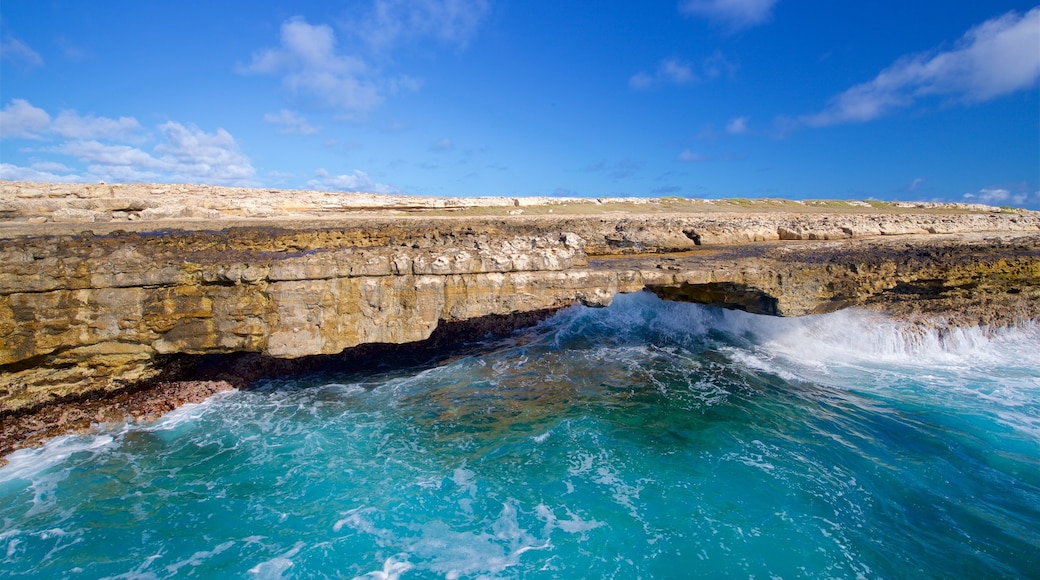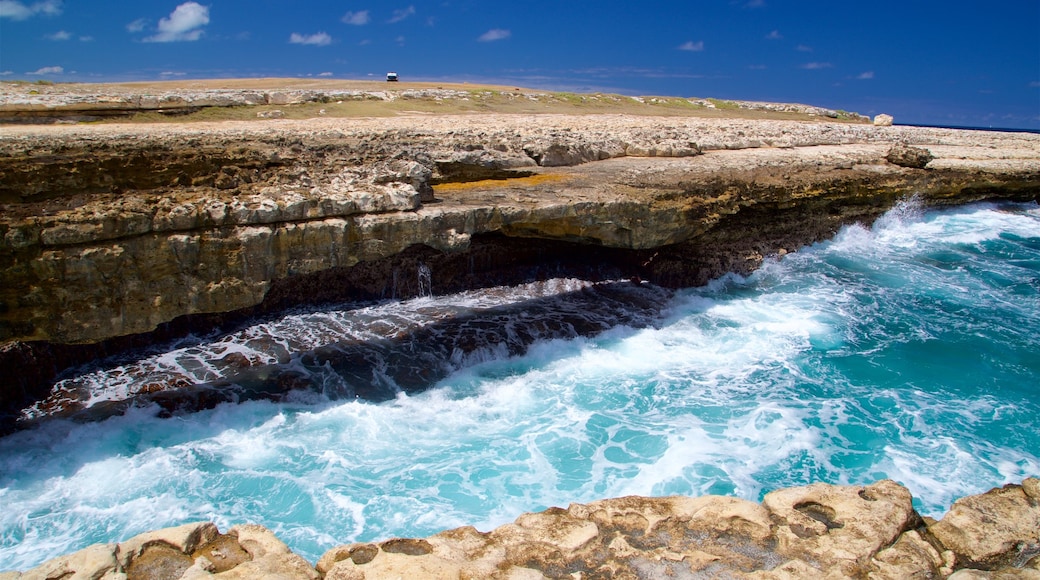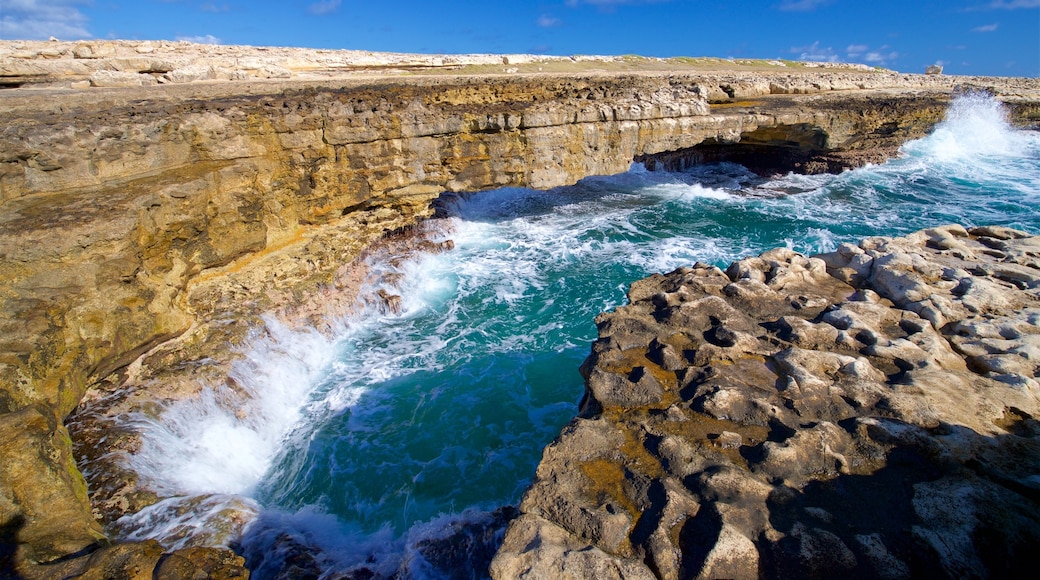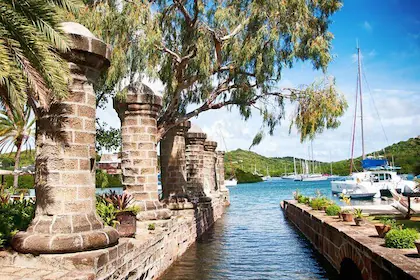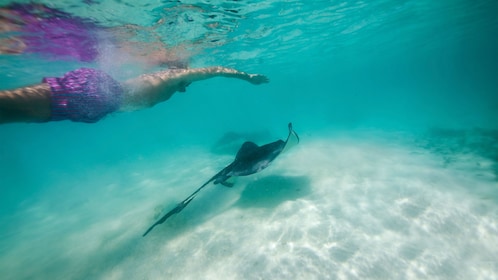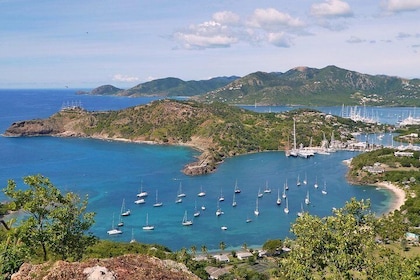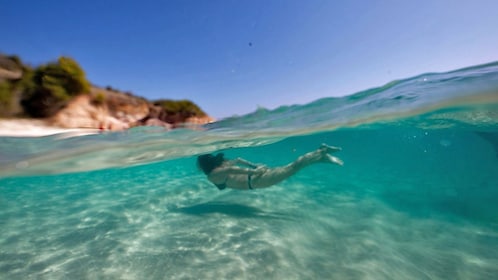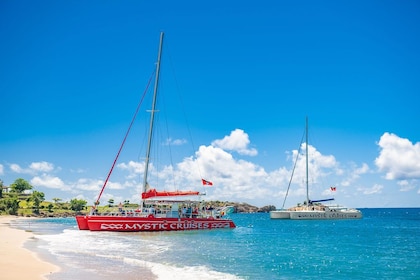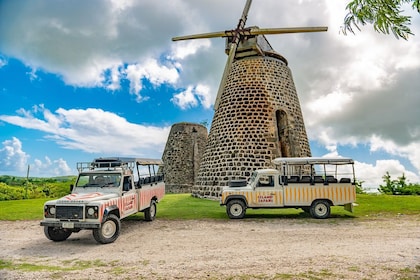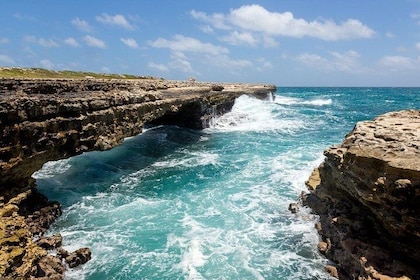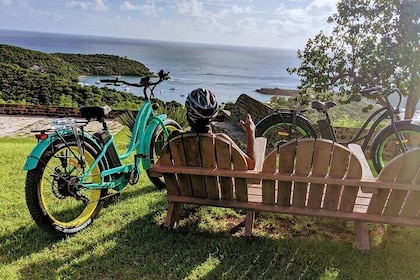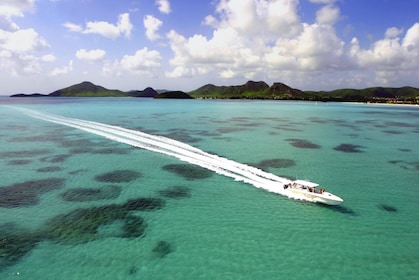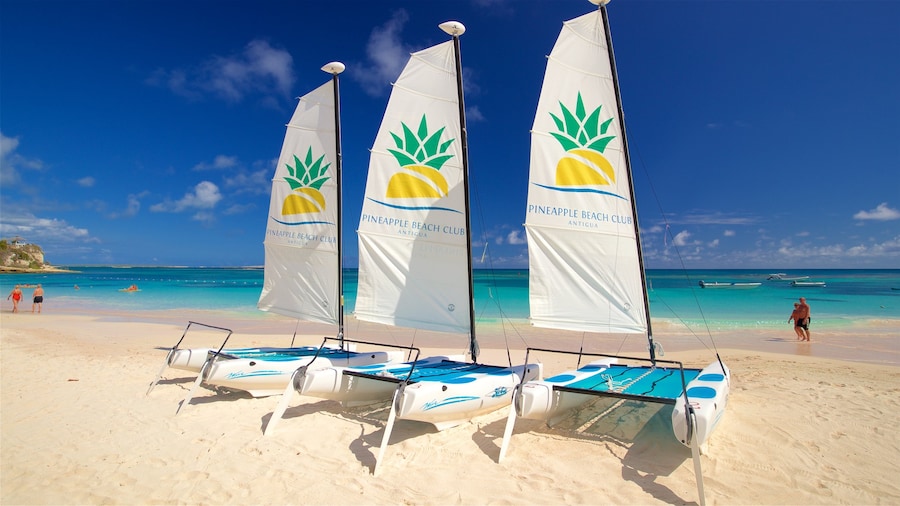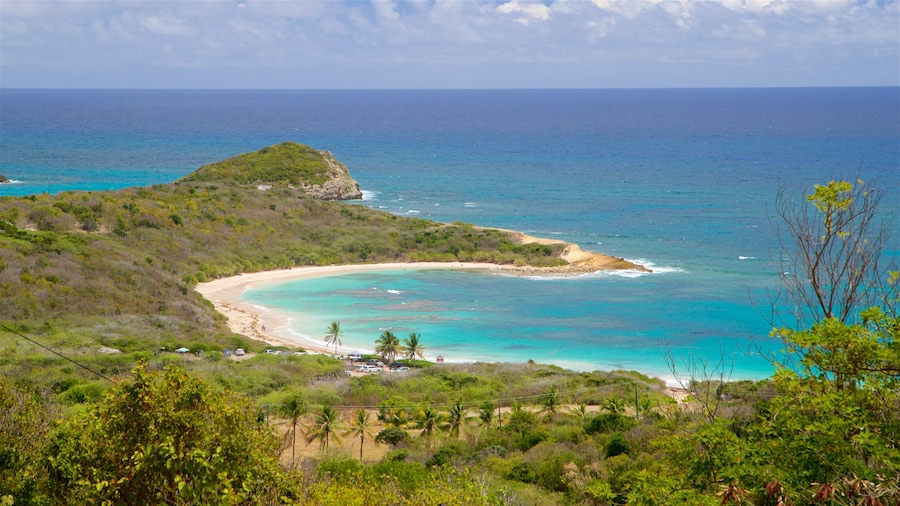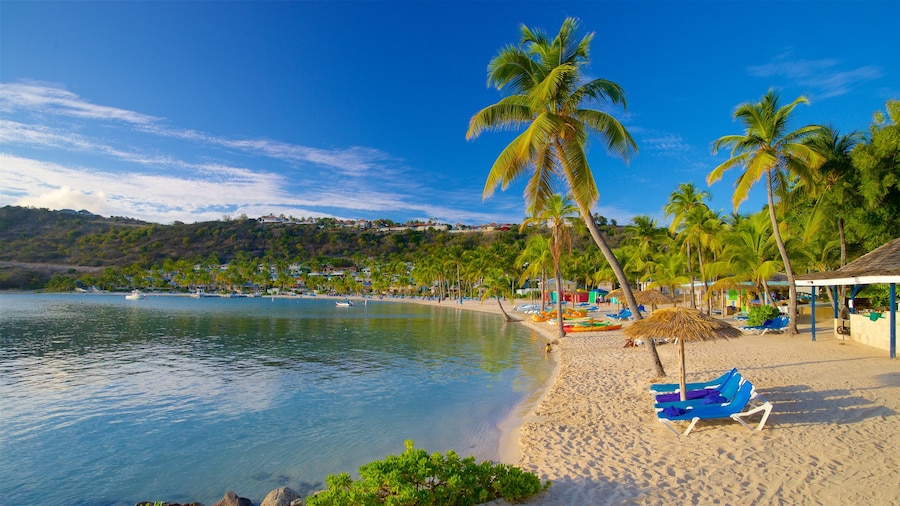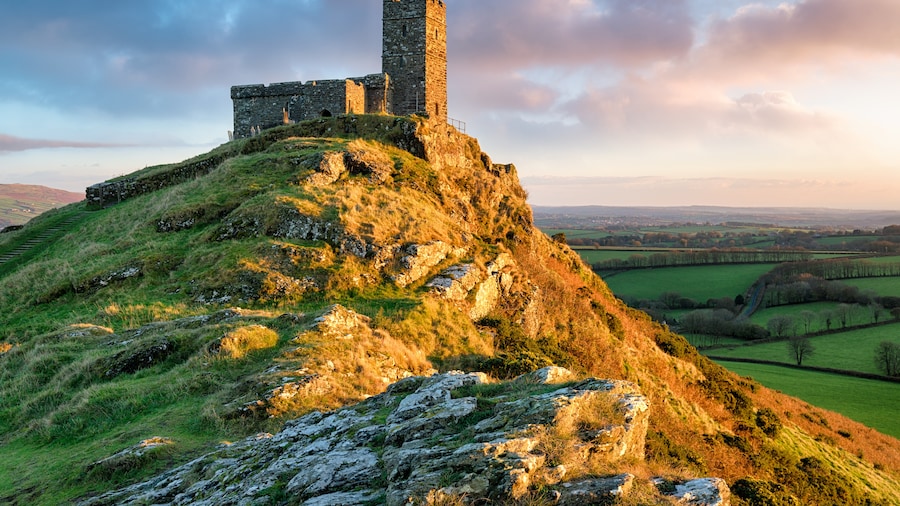Appreciate the artistry of nature with this narrow strip of rock that stretches across a blowhole in the Atlantic Ocean.
Devil’s Bridge is a fascinating natural rock formation on the eastern coast of the isle of Antigua. It is known for the crashing waves that erupt through its surrounding blowholes and arches, creating dramatic and photogenic scenes. Clamber along the jagged coastal terrain with family and friends and enjoy spectacular views.
Arrive at sunset to see the cozy effect of the darkening hues of the sky on this scenic structure. See the crashing waves lapping the bridge and surging above it on rough days. Notice the cautionary sign that warns against attempts to traverse this natural bridge, as it is fairly narrow and slippery. However, you may see local residents and visitors attempting the perilous crossing.
Visit the picturesque spot at sunrise for utter serenity and seclusion. The rising sun turns the rock formations golden. Listen to the soothing sound of the wild waves crashing onto the bridge. Spot crabs and other marine creatures dwelling in these rocky parts.
Consider how this natural bridge has formed over time by wave action, among other types of erosion. It continues to develop small cracks and will eventually fall into the ocean.
Wander along the coast and spot the various natural blowholes, through which water spouts. Hear the bridge’s tragic legend of slaves who threw themselves from the Devil’s Bridge. The arch may have taken its name from this story.
The structure is open at all times and free to visit. Wear appropriate footwear and take care on the slippery rock edges.
Devil’s Bridge overlooks the Atlantic Ocean on the eastern flank of the island of Antigua. It is on Indian Town Point, just northeast of the Willikies district and 13 miles (21 kilometers) east from St. John’s. See some of the attractions in the area, such as Our Lady of Mount Carmel Catholic Church, the Wadadli Animal Nature Park and the Willoughby Bay Overview.


